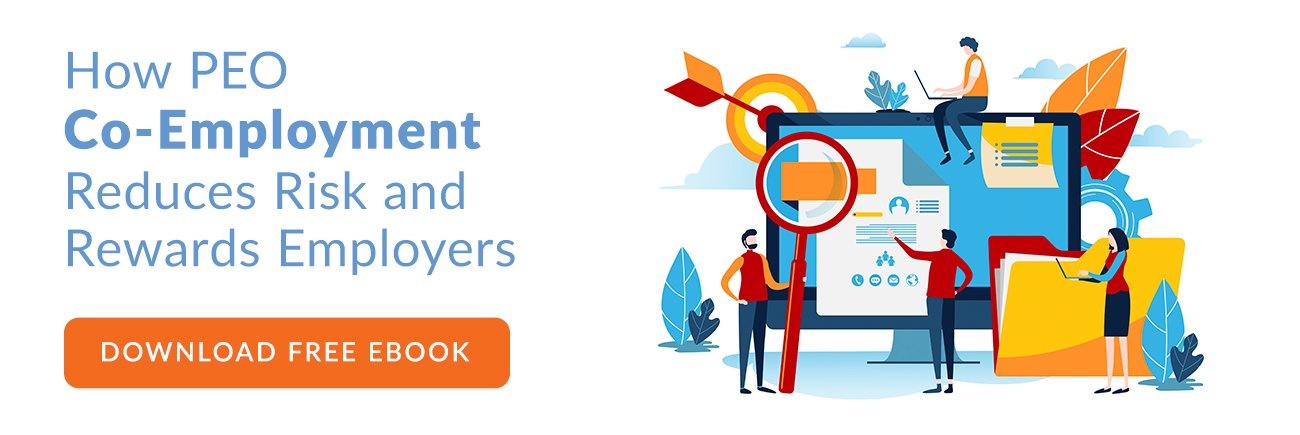Employers have excellent reasons to offer retirement plans to their employees. After all, Social Security retirement programs are fair targets in the political realm every year. In addition, the employer review site known as Glassdoor published a recent study that found 79% of employees prefer increased benefits over a pay hike.
Retirement plans, like other employee benefits, help employers retain valued employees and attract higher-quality employee candidates. They are another tool in the arsenal that allows the employer to succeed in today's competitive labor market.
When an employer offers employees a company retirement plan, there are threshold choices to make. For example, the employer may want to provide a 401(k) plan that is enticing to its employees. The employer must decide whether to offer a single-employer plan or join a multiple-employer plan. Employers also need to determine whether they want to offer an:
- ERISA tax-qualified plan that meets the minimum standards for e benefit plans, or
- Offer a non-qualified plan with fewer requirements.
Employer-sponsored retirement programs cost money to set up and administer. In practical terms, that means expenses in benefit distributions and in the use of staff time for administrative duties. Employers save considerable time and treasure when they use a Professional Employer Organization's (PEO) retirement plan services.
What is a Professional Employer Organization (PEO)?
A Professional Employer Organization (PEO) delivers a comprehensive way to outsource HR duties. PEOs provide entry to its employee benefit programs for their employer-clients. The PEO does not just provide 401(k) retirement benefit programs. Benefits provided by the PEO include:
- Workers' Compensation,
- Unemployment insurance, and
- Group health benefits.
Benefits administration services are part of the PEO's benefit package services. That means employees enjoy the coverage advantages while HR staff gains relief from the administrative burdens.
Why use a PEO's 401(k) Retirement Plan?
Partnering with a PEO means gaining a 401(k) plan co-sponsor. The benefits of using a PEO for retirement plan services include:
- Transfering fiduciary liability, fiduciary duties, and fiduciary responsibility,
- Using the PEO's 401(k) plan documents rather than creating your own,
- Handling of administrative responsibilities like benefits administration,
- Preparation and filing of the employer's Annual Report (Form 5500),
- Handling of statutorily required non-discrimination testing,
- Yearly compliance audits to ensure no compliance issues,
- Benefit plan cost savings,
- Lower-cost investment options as the result of a larger pool of assets available under the combined plans,
- Administrative costs shared by all the participating plan,
- Monitoring plan features to ensure compliance with legislative and regulatory requirements, and
- Access to a registered investment advisor .
These advantages are not possible with a traditional 401(k) plan without a PEO

What are the different types of PEO Retirement Plans?
Defined contribution plan options offered by PEOs come in various forms. The different types of 401(k) plans include:
ERISA Qualified Plans
Qualified plans comply with the requirements of the Employee Retirement Income Security Act of 1974, more popularly known as ERISA. Qualified plans must satisfy the requirements of both ERISA and the Internal Revenue Code (IRC) to be eligible for tax-favored status. For instance, plans are qualified plans if they are permanent without an expiration date.
A qualified plan is a written plan established and maintained for the employer's employees and beneficiaries. The plan sponsor must communicate the plan to its employees. Thanks to a May 21, 2020 ruling by the Department of Labor (DOL), there is a voluntary safe harbor for retirement plan administrators who want to use electronic media as a default to furnish covered documents to covered individuals. This is preferable to sending large volumes of paper documents through the mail.
The employer must deposit qualified plan assets in a trust administered by one or more trustees. Neither the assets nor the income in a qualified plan may revert to the employer. Some qualified plans allow both employers and employees to contribute to the program.
The rules for qualified plans require covering a certain percentage of employees, with non-discrimination testing periodically needed. Employers must enroll employees in the plan. Furthermore, qualified plans cannot treat officers, executives, and shareholders better than they do rank-and-file employee participants.
Non-qualified Plans
If an employer decides they do not want to satisfy the requirements of ERISA qualified plans, they have the option to set up a non-qualified plan. That is, non-qualified plans do not meet the requirements of ERISA or the IRC, and the plan participants and employers do not enjoy the tax-favored treatment. Non-qualified plans also do not have to cover a specified percentage of employees. In practice, employers set up non-qualified plans for their officers, executives, who are highly compensated employees.
Single-Employer vs. Multiple Employer Plans
In a single employer plan (SEP), the employer sets up or keeps their existing plan which the PEO administers. The employer controls plan features, service providers, and investment options.
In multiple employer plans (MEPs), the PEO provides a 401(k) plan to which several unrelated employers may contribute on behalf of their employees. As the multiple employer plan sponsor, the PEO controls the benefit features, service providers, investments, and retains fiduciary liability as the plan's sponsor.
The Department of Labor restricts the plan sponsor of an MEP to two groups:
- "Bonafide" PEO. A bona fide PEO refers to the PEO that performs substantial employment functions for its client-employers, retains significant control over the MEP's functions and activities, requires at least one employee of each employer participating in the MEP, and requires that the MEP is only available to the employees and former employees of the PEO and its client-employers.
- An association of employers in a specific trade, geographic area, or industry.
An MEP provides cost savings to its employer sponsors since non-discrimination testing and other administrative requirements are handled by the PEO.
Pooled Employer Plan (PEP)
A Pooled Employer Plan, or a PEP, is a specific kind of MEP as Congress defined the term under the SECURE Act. The Act's full name is the Setting Every Community Up for Retirement Enhancement Act of 2019. The SECURE Act amended ERISA to allow employers to provide retirement savings plans to unrelated employers through a Pooled Employer Plan (PEP). The SECURE Act created a new entity called a pooled plan provider. The law says that PEPs are single employer ERISA plans that must follow the SECURE Act's legal structure, including new Form 5500 reporting requirements.
The new Form 5500 reporting requirements for PEPs do not apply to MEPs sponsored by PEOs.
Take the Next Step with PEO Retirement Planning
As noted, employers have good reasons to consider contracting with a PEO, including to gain access to superior employee benefit plans. One reason is that PEO 401(k) plans provide competitive retirement plan services for employees. PEOs are also one of the few ways employers can access cost savings from MEPs.
Bear in mind that retirement benefits help you:
- Retain top talent who prefer enhanced benefits to pay increases,
- Attract quality employee candidates,
- Succeed in today's competitive labor market, and
- Gain tax-favored treatment for employers and participants of qualified plans.
A comprehensive PEO becomes your HR partner, keeping your business compliant with legislative and regulatory guidance. The PEO transfers from your business some fiduciary responsibilities for annual report filings and maintaining employee benefit programs. Join a PEO's retirement plan to free your staff to do what they do best: grow your business.

%20Cropped.jpg)

